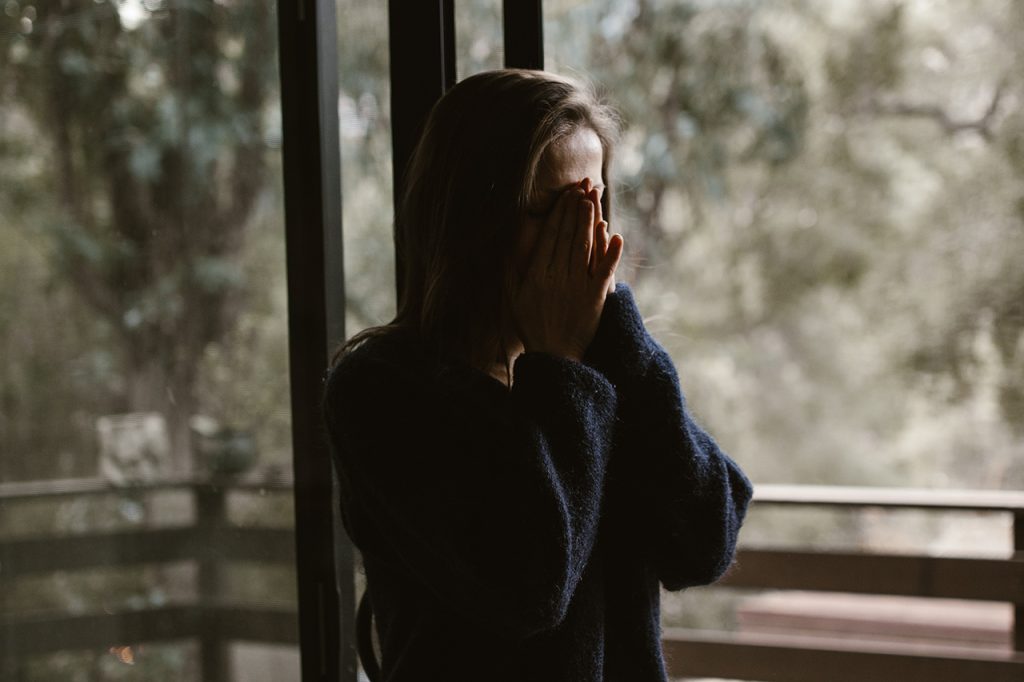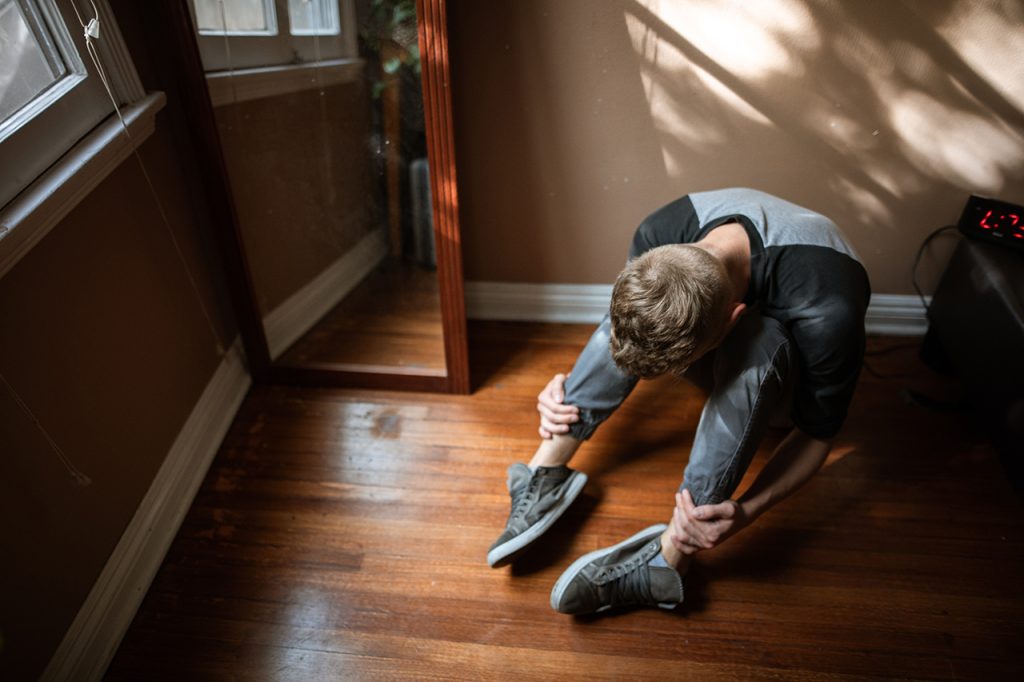In the quiet corners of Southern Utah, behind the serene landscapes and tranquil vistas, a silent battle is often fought. It’s the battle against post-traumatic stress disorder (PTSD), a condition that transcends mere words. Within the realm of this complex disorder, there are 17 distinct symptoms that individuals may experience. In this article, we will navigate the intricate world of PTSD, offering in-depth insights into each of these symptoms with the guidance of a compassionate mental health professional. Our aim is to shed light on the struggles, challenges, and paths toward healing for those who face this profound ordeal.
What Are The 17 Symptoms of PTSD?
Within the world of PTSD, there are 17 symptoms that can emerge, each casting its own shadow over an individual’s life:

1. Agitation
Agitation is a relentless storm within. It is an ever-present restlessness and unease that leaves individuals with PTSD perpetually on edge. It’s like being trapped in the eye of a tempest, where tranquility seems forever out of reach.
2. Nervousness and Anxiety
Persistent anxiety and heightened fear are frequent companions for those living with PTSD. Everyday situations become challenging as this ever-present anxiety casts a shadow over life, making peace a rare commodity.


3. Problems with Concentration or Thinking
The mind, clouded by intrusive memories and overwhelming emotions, struggles to concentrate, make decisions, or even think clearly. This cognitive fog is a formidable barrier to everyday functioning.
4. Problems with Memory
For some, PTSD can cast a veil over memories, making it challenging to recall past events accurately. The past, once a reliable reference, becomes an uncertain and elusive companion.
5. Headaches
Frequent tension headaches serve as a physical manifestation of the persistent stress and anxiety that accompanies PTSD. They are a constant reminder of the emotional turmoil within.
6. Depression and Crying Spells
Intense sadness and overwhelming emotions lead to episodes of uncontrollable weeping. Each tear shed becomes a silent plea for release from the weight of the trauma endured.


7. Suicidal Thoughts or Attempts
In the darkest moments, individuals with PTSD may grapple with thoughts of self-harm or suicide, descending into the abyss of despair. These thoughts reflect the profound suffering they experience.
8. Mood Swings
Rapid and unpredictable mood swings create emotional turbulence. It becomes a daily challenge to maintain stable relationships and find inner peace amidst this emotional whirlwind.
9. Obsessive-Compulsive Tendencies
As a coping mechanism, some develop obsessive thoughts and behaviors, leading to a relentless cycle of compulsion and obsession. These tendencies offer an illusory sense of control in a chaotic world.
10. Panic Episodes
Sudden, intense waves of fear and panic can be triggered by memories or situations associated with the trauma. It’s like being caught in a riptide of emotions, gasping for a breath of stability.


11. Paranoia
The feeling of being under constant threat, a sense of perpetual distrust or fear that others may cause harm, pervades daily life. Trust becomes elusive as paranoia takes hold.
12. Shakiness
The physical manifestations of stress are visible as trembling or shaking. It is a poignant reminder of the turmoil within, where the body echoes the unrest of the mind.
13. Substance Abuse
As a means of self-medication, some turn to drugs or alcohol to numb the pain, deepening their suffering. These substances offer temporary respite but ultimately exacerbate the turmoil.
14. Flashbacks
Vivid and distressing re-experiences of traumatic events haunt individuals with PTSD. It’s as if the past has become an inescapable and agonizing present, forever etched in their minds.


15. Hypervigilance
An unrelenting state of alertness keeps individuals scanning their surroundings for threats, even in seemingly safe situations. It’s like living in a world where danger is ever-present, and trust is scarce.
16. Nightmares
Frequent and harrowing dreams revolve around the traumatic event. Sleep is no longer a refuge but a battleground where the past continues to wage its war on the mind.
17. Sleep Disturbances
Insomnia and poor sleep quality are common, leaving individuals exhausted both mentally and physically. Each night becomes a journey through sleepless torment.
Understanding these 17 distinct symptoms of PTSD is the first step toward finding healing and recovery. You don’t have to traverse this arduous journey alone.
What to Do When Your PTSD is Triggered?
When the specter of trauma is triggered, recognition is the first step. Understanding what sets off your symptoms and identifying your personal triggers can give you a foothold in managing them.
Grounding techniques offer a way to stay rooted in the present moment. Deep breathing, mindfulness, or simply focusing on your immediate surroundings can provide a lifeline when you feel overwhelmed.
Seek professional help and lean on the support of friends and family. With the right strategies and compassionate understanding, you can manage these symptoms and work toward a brighter, more peaceful future.

How to Calm a PTSD Episode
In the midst of a PTSD episode, it’s essential to find ways to navigate the emotional turbulence and seek solace amidst the storm.

Deep Breathing
During a PTSD episode, deep and deliberate breathing can be your anchor. Slow, measured breaths serve as a lifeline, helping to reduce the intensity of panic and anxiety. Inhale deeply, hold, and then exhale slowly. This practice can help ground you in the present, offering a sense of control when the world feels chaotic.
Self-Soothing Techniques
Self-soothing techniques are like a lifeboat in the tumultuous sea of PTSD. They offer refuge and a way to find inner peace. Consider taking a warm bath, allowing the soothing waters to envelop you, washing away the emotional distress. Alternatively, immerse yourself in soothing music that resonates with your soul, providing a comforting backdrop against the storm.
Ensure a Safe Environment
Seeking safety is paramount during a PTSD episode. Ensure that you are in a secure environment where you are shielded from potential triggers. If the episode occurs when you’re alone and the world feels like a threatening place, reach out to a trusted friend or family member for support. Their presence, whether physically or through a comforting voice on the phone, can provide an invaluable lifeline to safety and reassurance. Remember, you don’t have to face the tempest alone.

The Biggest Symptom of PTSD
Among the myriad symptoms, perhaps the most pervasive is hypervigilance. This constant state of alertness can be exhausting and profoundly affect daily life.

Three Unhealthy Coping Skills for PTSD
In the face of the relentless struggle that is PTSD, individuals may often find themselves resorting to coping mechanisms that, while momentarily providing solace, ultimately contribute to their prolonged suffering. Identifying and understanding these unhealthy coping strategies is a crucial step towards breaking free from their chains.
Substance Abuse: The Fleeting Escape
One of the most pervasive and destructive coping mechanisms for those with PTSD is substance abuse. The allure of drugs or alcohol lies in their ability to temporarily numb the pain and offer a brief escape from the tormenting symptoms of the disorder. However, the relief they provide is fleeting, and the aftermath can be even more devastating. Substance abuse often deepens the emotional abyss, making it increasingly difficult to escape the cycle of addiction and despair.
The answer to substance abuse lies in recognizing its hold and seeking professional help to address the underlying trauma and pain. While it may provide a momentary respite, the long-term effects of substance abuse only intensify the battle against PTSD. Reaching out to a therapist or support network is the first step towards finding healthier coping strategies.
Self-Isolation: The Lonely Abyss
Another pitfall that those with PTSD may encounter is self-isolation. It’s a natural instinct to withdraw from the world when it feels hostile and unforgiving. Yet, retreating from social connections can intensify feelings of loneliness and depression, creating a solitary abyss where the pain remains unchecked.
Overcoming self-isolation requires courage and the willingness to reach out to loved ones and support networks. They can provide a lifeline to reality, reminding individuals that they are not alone in their struggle. Social connections, though challenging to maintain, can offer vital emotional support and a bridge back to a more fulfilling life.
Avoidance: The Illusion of Protection
Avoidance is a seemingly protective mechanism that actually reinforces the power of the trauma. It involves steering clear of situations or triggers associated with the traumatic event. While it may provide a sense of safety in the short term, in the long run, it hinders the healing process and exacerbates the disorder.
Gradual exposure, under the guidance of a mental health professional, is a more constructive approach. It involves confronting the trauma’s source in a controlled and supportive environment. This process, known as exposure therapy, allows individuals to revisit their traumatic experiences at their own pace, helping to reduce the emotional charge that keeps PTSD alive.

The journey through PTSD is a complex one, riddled with unique challenges. Understanding the 17 symptoms, acknowledging your triggers, and employing healthy coping mechanisms can provide hope and a path toward healing. You are not alone on this journey; seek professional help and the support of those who care about your well-being. With the right strategies and compassionate understanding, there is a brighter future beyond the shadows of PTSD.


